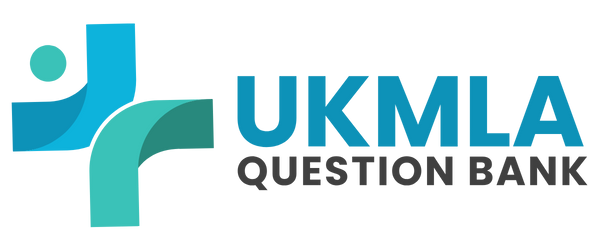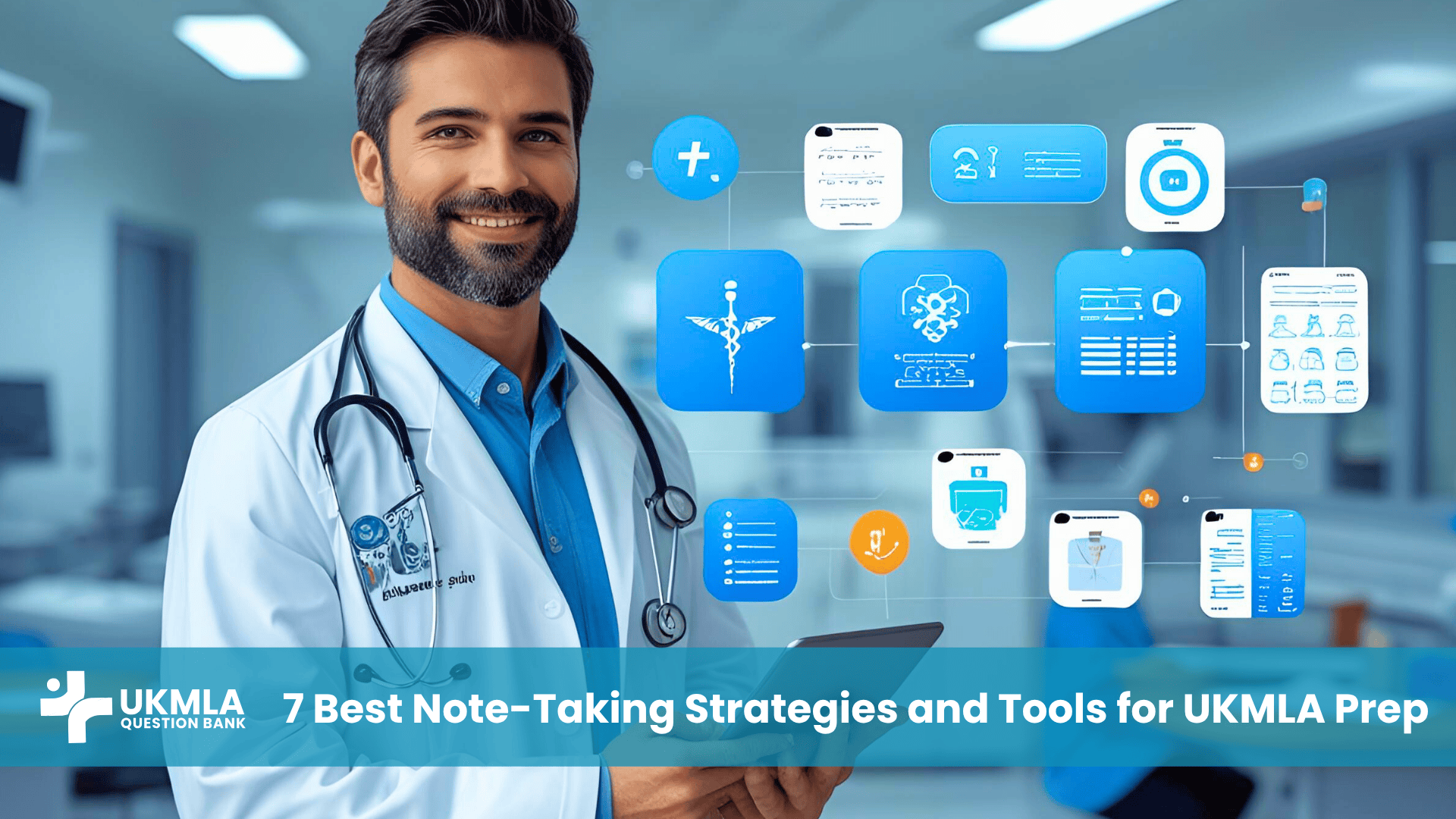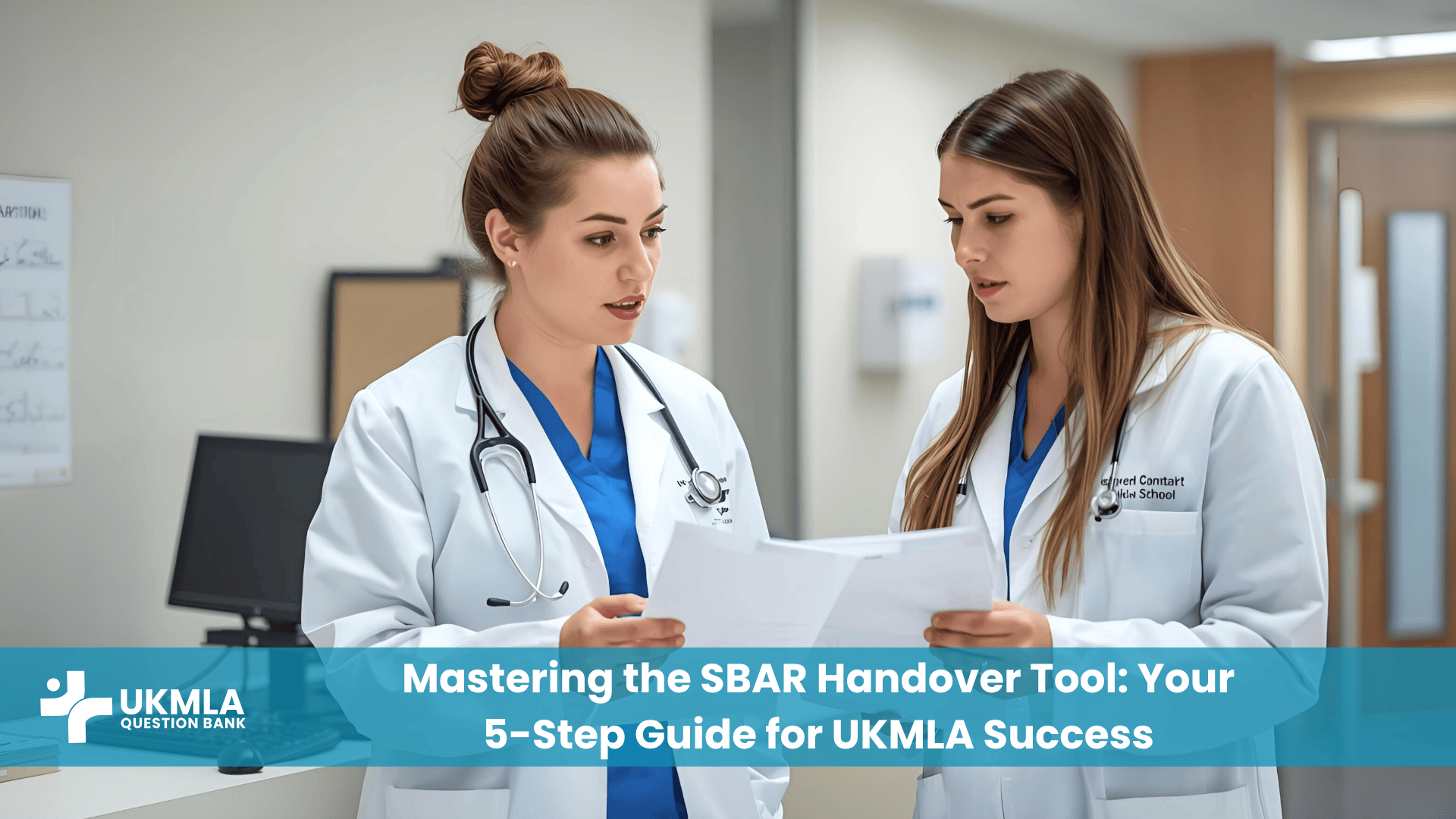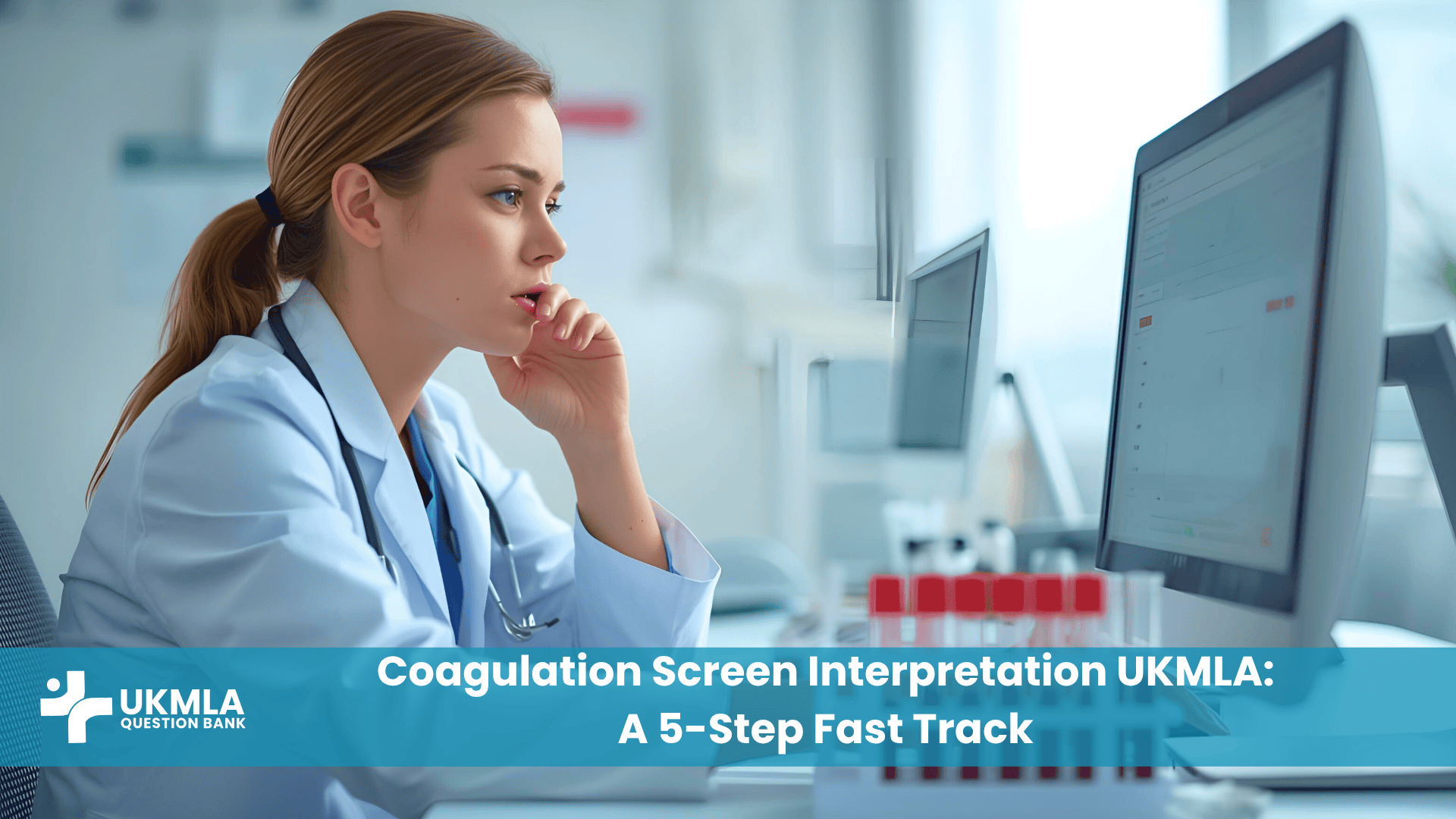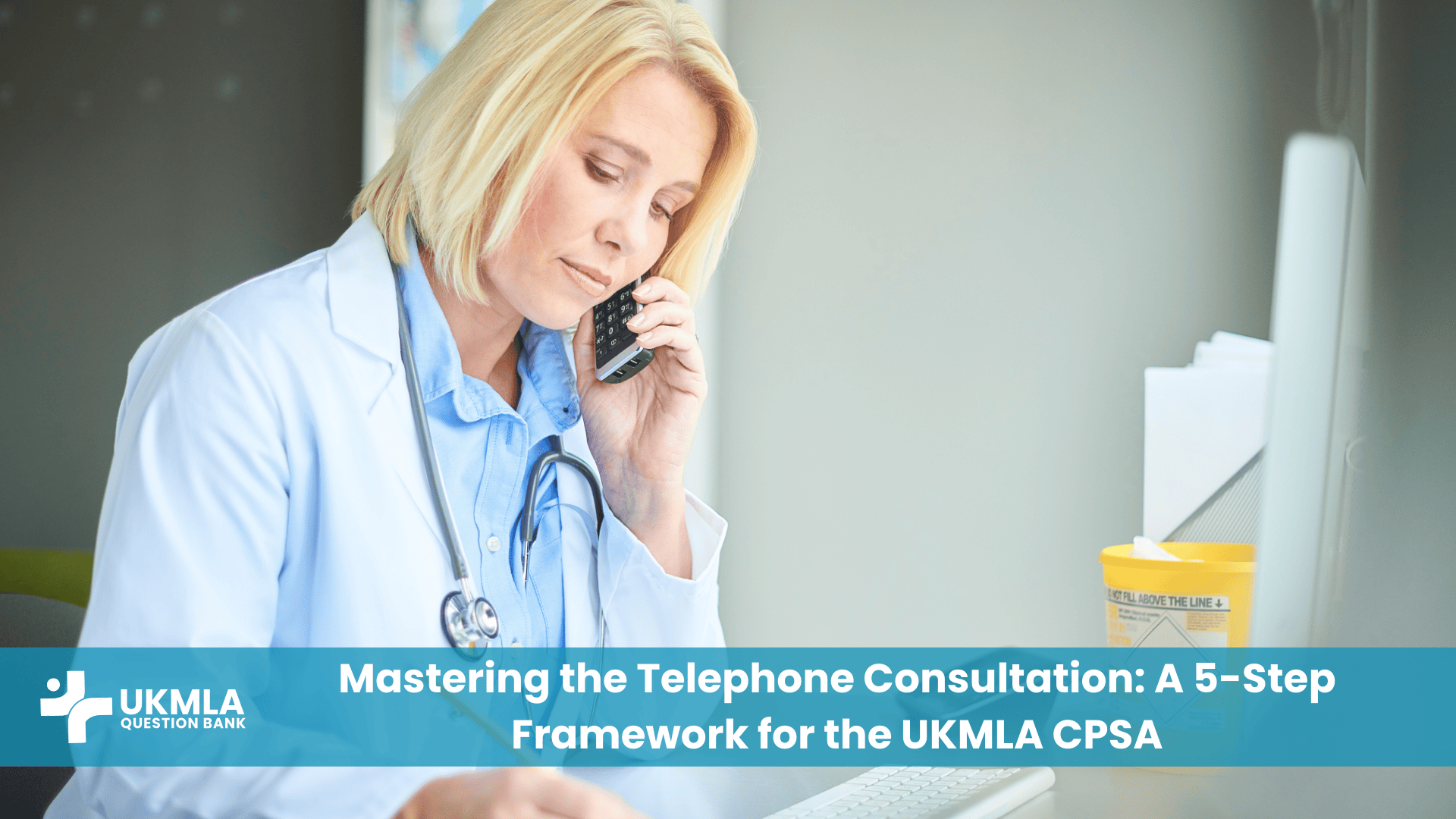Introduction
The journey to becoming a licensed doctor in the UK through the UK Medical Licensing Assessment (UKMLA) demands not just knowledge, but also highly effective learning and retention methods. With a vast curriculum spanning diverse medical specialties, successful UKMLA Note-Taking Strategies are not merely helpful; they are fundamental. The ability to efficiently capture, organize, and review information can significantly impact your study efficiency and, ultimately, your exam performance.
This comprehensive guide is designed to equip you with the most effective UKMLA Note-Taking Strategies and essential tools. We will delve into 7 proven methods and integrated tools that top medical students and aspiring doctors use to streamline their UKMLA preparation, ensuring complex information becomes manageable and memorable. By mastering these techniques, you’ll optimize your study time, enhance recall, and build a solid foundation for success in both the Applied Knowledge Test (AKT) and the Clinical and Professional Skills Assessment (CPSA). For a broader understanding of the examination structure, you may find our article on Understanding the UKMLA Exam Format particularly helpful. For more detailed information on the UKMLA itself, consult the General Medical Council (GMC) official UKMLA page.
Key Takeaways
Active Engagement: Move beyond passive highlighting to truly process information.
Visual Learning: Use diagrams and concept maps for complex topics.
Digital Efficiency: Leverage apps for organization, searchability, and multimedia.
Question-Based Review: Transform notes into self-testing questions for recall.
Conciseness: Prioritize summarizing key facts for quick revision.
Structured Systems: Implement consistent note-taking methods like Cornell.
Integrated Approach: Combine strategies and tools for a comprehensive study system.
Why Effective Note-Taking is Your UKMLA Advantage
Effective note-taking is far more than just writing things down; it’s an active learning process that deepens understanding and boosts recall. For the UKMLA, where the volume of information is immense and clinical application is key, strategic note-taking becomes a significant advantage.
It aids in information retention, allowing you to process and internalize complex medical concepts rather than merely memorizing them. Well-organized notes facilitate efficient revision cycles, making spaced repetition and active recall far more effective. It also helps in identifying subtle knowledge gaps that might otherwise go unnoticed, refining your understanding as you go.
Ultimately, strong UKMLA Note-Taking Strategies help you to bridge the gap between theoretical knowledge and clinical scenarios, and improve your ability to quickly retrieve critical information under exam conditions, impacting both your AKT performance and your approach to the CPSA. This foundational skill ensures you’re not just memorizing, but truly comprehending the vast medical landscape.
The 7 Essential UKMLA Note-Taking Strategies & Tools
Here are 7 proven strategies and integrated tools that can transform your UKMLA preparation:
1. Active Recall & Question-Based Notes
This strategy transforms passive reading into active learning, making it one of the most powerful UKMLA Note-Taking Strategies. Instead of just summarizing what you read or hear, actively convert your study material directly into questions and answers within your notes. For instance, after studying a specific disease, don’t just write down its symptoms; instead, formulate questions like: “What are the cardinal symptoms of X?” or “How is Y emergency managed in primary care?”
This method forces your brain to actively retrieve information, significantly strengthening memory pathways. You can then use these self-generated questions for spaced repetition. Tools like Anki or Quizlet are perfect for this, allowing you to create digital flashcards directly from your question-based notes, complete with images, audio, and even cloze deletions for highly effective, systematic review.
2. Concept Mapping & Mind Mapping
Visualizing complex relationships is crucial in medicine, and concept mapping or mind mapping excels at this. These techniques allow you to graphically organize complex medical topics, showing the intricate connections between diseases, their pathophysiology, common symptoms, diagnostic investigations, and management pathways.
This visual method helps you see the “big picture” rather than isolated facts, promoting a deeper, more holistic understanding of interconnections. This is particularly valuable for UKMLA scenarios that often require integrating knowledge across different systems. Digital tools such as MindMeister or XMind offer flexible platforms to create, edit, and share dynamic mind maps, enabling color-coding, embedding links, and collaborative features.
3. The Cornell Note-Taking System
The Cornell method provides a highly structured and effective approach to note-taking that facilitates active review. Divide each page of your notebook (physical or digital) into three distinct sections:
Main Note-Taking Area: For taking detailed notes during lectures or while reading.
Cue/Question Column (smaller left column): Immediately after taking main notes, jot down keywords, questions, or cues that summarize the main points in the larger section.
Summary Section (bottom strip): At the end of a study session, concisely summarize the entire page’s content in this section.
This systematic approach promotes active processing during note creation and makes subsequent review highly efficient. You can cover the main notes and test yourself using the cues, then check against the summary.
4. Digital Annotation & Highlighting for UKMLA Resources
In an increasingly digital study environment, effective digital annotation is a key UKMLA Note-Taking Strategy. Instead of traditional highlighting that often provides limited learning benefit, leverage digital tools to interact deeply with your UKMLA study materials. This includes PDFs of official guidelines (e.g., NICE, RCOG), research papers, or the GMC UKMLA Content Map itself.
Use annotation features to add margin notes, draw connections, embed voice memos for self-explanation, or even link to external resources. The benefits are immense: your notes stay contextual to the source material, they become fully searchable, and you can easily organize and retrieve them. Applications like Goodnotes (ideal for iPad/Apple Pencil users), Notability, or robust PDF readers like Adobe Acrobat Reader offer powerful annotation and organization features.
5. Summarization & Condensation
The sheer volume of information for the UKMLA makes concise summaries absolutely essential. This strategy involves actively distilling large amounts of material into highly condensed, high-yield notes. The goal is not to copy, but to paraphrase and synthesize.
Focus on identifying and capturing only the most crucial facts, mnemonics, diagnostic criteria, and management algorithms, and red flags. Aim to create “cheat sheets” or one-page summaries for high-yield conditions, core pathways, or key pharmacological principles. This practice forces deep understanding and is perfect for rapid revision cycles in the final weeks leading up to the exam, allowing you to quickly refresh critical information without sifting through extensive texts.
6. Integrated Note-Taking Platforms
For students who thrive with a centralized digital workspace, integrated platforms that allow for linking, embedding, and cross-referencing notes are invaluable. These tools go beyond simple note-taking, enabling you to build a dynamic, interconnected personal knowledge base.
Notion is an outstanding example, offering unparalleled flexibility. You can create linked databases for specific conditions, pharmacology lists, clinical skills checklists, embed PDFs or videos, and even directly link to your Anki cards. Its powerful search and filtering capabilities make retrieving specific information incredibly fast. Evernote also offers robust web clipping, rich text editing, and strong search functionalities to consolidate diverse study materials from web pages to handwritten notes. These platforms help create a seamless study ecosystem.
7. Utilizing Medical-Specific Learning Apps for Clinical Notes
Beyond general note-taking software, incorporating apps designed specifically for medical knowledge can significantly augment your study. While not traditional note-takers, many of these apps allow you to add personal notes, highlight key facts, or create custom summaries directly within their vast libraries of clinical content, question banks, or learning modules.
For example, Amboss provides detailed knowledge articles with a robust highlighting and annotation system, allowing you to save and review your personal notes linked directly to their content. Osmosis similarly offers integrated note features within its video lessons and flashcards. This method is particularly useful for integrating factual recall with immediate clinical context and reinforcing learning directly within active question practice.
Summary of Strategies and Tools
To provide a quick overview, here’s a summary of the 7 essential UKMLA Note-Taking Strategies and tools discussed:
| Strategy/Tool | Brief Description | Key Benefit for UKMLA |
| 1. Active Recall & Question-Based Notes | Turning content into self-testing questions & flashcards | Boosts long-term memory & exam readiness |
| 2. Concept Mapping & Mind Mapping | Visual organization of complex medical topics & links | Enhances holistic understanding & problem-solving |
| 3. The Cornell Note-Taking System | Structured note-taking with cues & summaries | Facilitates systematic active review |
| 4. Digital Annotation & Highlighting | Annotating PDFs & digital resources directly | Keeps notes contextual, searchable, and organized |
| 5. Summarization & Condensation | Distilling large volumes into concise cheat sheets | Ideal for quick, high-yield revision cycles |
| 6. Integrated Note-Taking Platforms | Centralized digital workspaces for linked knowledge bases | Consolidates all study material, powerful cross-referencing |
| 7. Specialized Medical Learning Apps | Using apps with built-in note features for clinical facts | Integrates factual recall with clinical context |
Optimizing Your Note-Taking Workflow
Implementing these strategies effectively requires a disciplined workflow tailored to the UKMLA’s demands:
Consistency is Key: Make note-taking an integral and regular part of your study routine, not an afterthought. Consistent engagement with your notes reinforces learning over time.
Integrate with Practice: Actively use your notes to inform your UKMLA question bank practice. Conversely, use insights gained from practice questions—especially incorrect answers—to refine, expand, or correct your notes, creating a powerful feedback loop.
Regular Review: Active review of your notes is paramount, often more important than the initial act of taking them. Incorporate spaced repetition into your review schedule to revisit information at optimal intervals, ensuring long-term retention.
Tailor Your Approach: While general strategies apply, consider adapting your note-taking for different UKMLA sections. For AKT, concise summary notes and flashcards are invaluable. For CPSA preparation, mind maps for patient encounters, flowcharts for clinical management, or even script notes for history taking and patient explanations can be highly effective.
Minimize Distractions: Dedicate specific, focused sessions solely to note-taking to ensure deep processing and avoid shallow work.
Common Note-Taking Mistakes to Avoid for UKMLA
To truly master your UKMLA Note-Taking Strategies, be aware of these common pitfalls that can hinder your progress:
Passive Copying: Simply transcribing information verbatim from textbooks or lectures without actively processing or paraphrasing it offers minimal learning benefit. Your brain isn’t engaging with the material.
Over-Highlighting: If everything is highlighted, nothing stands out. Be selective and use highlights sparingly to guide deeper annotation or to identify key phrases that warrant further investigation or active recall questions.
Disorganization: Haphazard or inconsistently organized notes are almost useless for revision. Stick to a consistent system (like the Cornell method or a clear digital folder structure) to ensure quick and easy retrieval of information.
Creating Too Many Notes: Aim for conciseness and synthesis. More notes do not necessarily mean more learning. Focus on quality over quantity, capturing essential information rather than every detail.
Neglecting Review: Notes are only valuable if they are actively reviewed. Don’t just take them and forget them. Consistent, active review sessions are vital for transferring information from short-term to long-term memory, which is essential for the vast UKMLA curriculum.
Frequently Asked Questions (FAQ) Your UKMLA Note-Taking Strategies Questions Answered
The most effective UKMLA Note-Taking Strategies involve active learning. This includes active recall/question-based notes, concept mapping, the Cornell system, digital annotation, and summarization. Combining these methods enhances understanding and retention.
Both physical and digital notes have benefits. Digital notes offer searchability, easy organization, and multimedia integration, useful for the vast UKMLA content. Physical notes (e.g., Cornell method) can enhance memory through tactile engagement. Many students find a hybrid approach works best.
Integrate active recall by turning your notes into questions (e.g., using the cue column in Cornell notes). After studying a topic, try to recall information by answering these questions without looking at your notes. Dedicated flashcard apps like Anki are excellent for this.
Yes, several apps can aid UKMLA Note-Taking Strategies. Notion and Evernote are great for comprehensive digital organization and knowledge bases. Goodnotes or Notability are excellent for annotating PDFs, while Anki and Quizlet are perfect for active recall flashcards. Medical-specific apps like Amboss or Osmosis also allow for integrated note-taking.
Concept mapping helps by visually linking complex information. For UKMLA, you can map out disease pathways, differential diagnoses, or management algorithms. This visual structure aids in understanding relationships between concepts, making it easier to recall during problem-solving questions in the AKT and clinical scenarios in the CPSA.
While note-taking is crucial, the emphasis should always shift towards active revision. A good rule of thumb is to spend roughly 20-30% of your study time on initial note-taking and understanding, and 70-80% on actively reviewing those notes and practicing questions.
To avoid passive note-taking, engage actively with the material. Don’t just copy. Paraphrase, summarize in your own words, connect new information to existing knowledge, and immediately formulate questions from the content. Use methods like the Cornell system or mind mapping that inherently require active thought.
Absolutely. For the AKT, structured notes (e.g., Cornell, condensed summaries) are key for factual recall. For the CPSA, note-taking can involve creating mind maps for differential diagnoses, flowcharts for clinical management, or even scripting key phrases for history taking and explanations to patients.
Reviewing notes is arguably more important than taking them. Without active and spaced review, information fades. Consistent review, especially using active recall and spaced repetition methods, is vital for transferring information from short-term to long-term memory, which is essential for the vast UKMLA curriculum.
For easy access and searchability, digital storage is often preferred. Cloud-synced platforms like Notion, Evernote, or even Google Drive/Dropbox for annotated PDFs allow you to access your notes from any device. Organize them logically by specialty, system, or UKMLA content map domain for quick retrieval during revision.
Conclusion
Effective UKMLA Note-Taking Strategies are a cornerstone of successful medical licensing assessment preparation. By embracing active learning techniques like question-based notes, leveraging visual tools such as concept maps, and strategically utilizing digital platforms like Notion or medical-specific apps, you can transform your study process.
These 7 essential methods and tools are designed to help you not just memorize, but truly understand and retain the vast medical knowledge required. By avoiding common pitfalls and integrating your note-taking with consistent review and practice, you’ll optimize your learning, build confidence, and significantly enhance your chances of excelling in the UKMLA. Remember, the goal is efficient and effective learning that translates directly to exam success and confident clinical practice.
Unlock Your UKMLA Potential Today!
Ready to put your newly honed UKMLA Note-Taking Strategies into practice? Don’t just learn about effective study – experience it! Head over to our comprehensive UKMLA Question Bank to apply your knowledge with real exam-style questions. Reinforce your learning, identify your strengths and weaknesses, and accelerate your path to UKMLA success.
